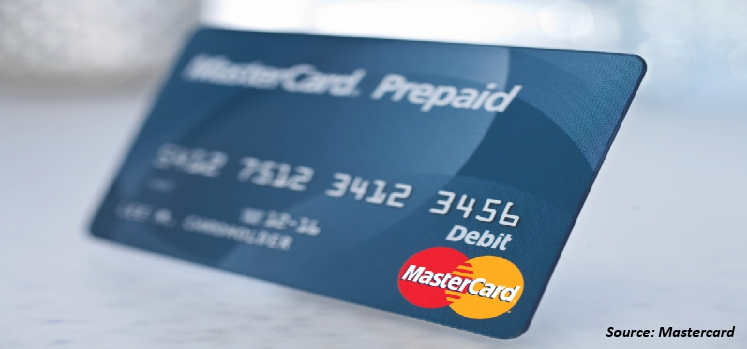
Prepaid Card Market by Card Type (Open Loop and Closed Loop), by Offering (General Purpose Reloadable (GPR) Card, Gift Card, Payroll Card, Prepaid Debit Card, Government Card, Prepaid Incentive Card, and Others), by Application (Bills Payment, Food, Entertainment, and Savings), and by End User (Retail, Corporate, and Government/Public Sector) – Global Opportunity Analysis and Industry Forecast, 2024–2030
Industry: Retail and Consumer | Publish Date: 11-Oct-2023 | No of Pages: 270 | No. of Tables: 200 | No. of Figures: 165 | Format: PDF | Report Code : N/A
Market Definition
The global Prepaid Card Market size was valued at USD 32.87 billion in 2023 and is predicted to reach USD 61.46 billion by 2030, with a CAGR of 8.9% from 2024 to 2030. A prepaid card, also known as a prepaid debit card or stored-value card, is a kind of payment method that allows users to load a specific amount of money onto the card in advance. This amount can be used for various transactions, similar to a traditional debit or credit card. It allows users to make purchases, withdraw cash from ATMs, or conduct online transactions up to the amount available on the card.
The market includes various prepaid cards, such as general-purpose reloadable cards, gift cards, travel cards, and payroll cards. Prepaid cards present a convenient and flexible payment method that offers several benefits, including financial control and security, wide acceptance, and accessibility. Prepaid cards are different from credit cards as they do not allow to borrow money. A user can only spend the money that has already been loaded onto the card. This feature helps individuals manage their spending and avoid accumulating debt.
Additionally, prepaid cards are widely accepted for online and in-person transactions, making them a versatile tool for various payment needs. These cards are also helpful for people who may not have access to regular bank accounts or wish to avoid linking their spending to a bank account. Prepaid cards can be particularly beneficial for budgeting, travel, gifting, and providing allowances to family members or employees. Finally, they are safer as they are not connected to any bank account, so the money remains safe even if the card is lost or stolen.
The Growing Trend of Achieving Financial Inclusion Via Prepaid Cards Drives Market Growth
Prepaid cards are pivotal in providing financial access to the unbanked or underbanked. They do not require a traditional bank account, making them more accessible to a broader population. According to the World Bank, nearly 1.7 billion adults across the world still do not have a bank account. Prepaid cards can provide financial services to these people, such as the ability to send and receive money, make payments, and withdraw cash.
Prepaid cards are a safe and accessible alternative to carrying cash, especially for people who do not have other secure banking options. They also empower vulnerable populations, such as refugees and low-income individuals, by providing a way to receive and manage money, which can help to improve their financial stability. Prepaid cards teach people about financial management and encourage responsible spending and saving habits. They are also important for allowing people to make small payments and participate in online commerce.
Rising Trend of Digital Payments Propels Market Growth
The prepaid card industry is proliferating due to digital transformation. These versatile digital payment tools are convenient and accessible, especially for the e-commerce sector. They align with contactless and mobile payment trends, providing secure transactions. According to the Harvard Business Review, 89% of large companies globally are undergoing digital and artificial intelligence (AI) transformations, and they have achieved 31% of the expected revenue increase and 25% of the expected cost savings.
Prepaid cards enable cross-border payments, making them useful internationally. Advanced security measures protect against unauthorized use. Customization options make them more appealing than before, and integration with mobile apps gives users direct financial control. Real-time tracking and reduced operational costs are additional benefits. Innovations such as dynamic spending controls and rewards integration make them even more valuable. By embracing emerging technologies, prepaid cards remain at the forefront of modern payments.
Rising Payment Alternatives Inhibiting the Market Growth
The growing popularity of alternative payment methods, such as digital wallets and real-time payments, is creating a hindrance in the growth of the prepaid card industry. These alternatives offer advanced technology, seamless transactions, and instant fund transfers, which appeal to consumers and reduce the demand for prepaid cards. According to ACI Worldwide, Inc. (a US-based payment system company), the number of real-time payment (RTP) transactions worldwide reached a record high of 195.0 billion in 2022, representing a year-over-year growth of 63.2%. The figures show that RTP is a potential threat to the prepaid card industry.
Digital wallets and real-time payments are integrated with existing banking systems, and have enhanced security features such as biometric authentication and tokenization. This makes them a trusted choice for users. Additionally, they are widely accepted, have diverse use cases, and can save users money in certain scenarios. The trend towards mobile payments further reduces the need for physical prepaid cards. To stay competitive, the prepaid card industry must adapt and innovate in response to these changing consumer preferences and technological advancements.
The Rapidly Growing E-Commerce Sector Creates Opportunities
E-commerce and online marketplaces are creating significant growth opportunities for the prepaid card market. These platforms offer a secure and convenient payment method, with the added security of not requiring direct access to bank accounts. By accepting prepaid cards, online businesses can expand their customer base, especially to people who do not have traditional banking options.
Prepaid cards also make it easy to make global transactions and international purchases, breaking down currency barriers. They are often used as gift cards or rewards, further driving demand. They allow consumers to manage their spending by setting a budget.
According to the International Monetary Fund, the online share of total expenditure increased sharply from 10.3% in 2019 to 12.2% in 2021. The growth of online shopping is a positive development for the prepaid card industry, owing to the wider customer base. It offers consumers a more secure way to shop online and gives consumers more control over their spending.
In addition, prepaid cards offer privacy-conscious individuals anonymity in online transactions. These cards provide access to e-commerce opportunities for the unbanked and underbanked populations. The integration of prepaid cards into e-commerce platforms enhances the shopping experience, making it more accessible, secure, and flexible for many consumers. This mutually beneficial relationship between the prepaid card industry and the e-commerce sector continues to drive innovation and demand in both industries.
Europe is Projected to Dominate the Prepaid Card Industry
The increasing concerns regarding the identity theft are propelling growth in the European prepaid card industry as consumers seek secure payment options. According to the data published by Cifas (a U.K.-based fraud prevention service provider), identity fraud cases increased by 23% in 2022 compared to 2021, with over 51,000 more cases reported. It creates significant demand for secure options, including prepaid cards, with more and more people opting for these cards in the near future.
Moreover, factors including a robust e-commerce sector, a significant presence in global commerce, and the adoption of digital services are driving the market expansion. According to the International Trade Administration, the Germany's e-commerce market is larger and more active than the European average. In 2021, Germans spent USD 127.5 billion online, an increase by 24% from 2020. The online shopping is expected to grow from 62.4 million users in 2020 to 68.4 million users in 2025.
In addition, rising high per capita spending, a shift towards cashless transactions, and tech-savvy consumer bases further contribute to this trend. According to the International Trade Administration (ITA), French consumers spent USD 157.66 billion online, representing a growth of 15.1% from the previous year. This growth is expected to continue in the coming years, with the French B2C commerce market forecasted to reach USD 215.31 billion by 2025. Also, 41.8 million French people shopped online, representing over 80% of internet users. The average online transaction in 2021 was around USD 73.
Furthermore, growing innovative salary payment solutions and a move away from cash payments are key drivers of the growth in the region. For instance, in April 2021, Hi55 Ventures partnered with Mastercard to launch a salary access card, offering real-time pay access. This partnership aims to revolutionize payment control for better budgeting.
Asia-Pacific to Witness Substantial Growth in the Market
The prepaid card industry in the Asia-Pacific region is experiencing a substantial growth, driven by various factors, such as high adoption of digital wallets, strategic partnerships with global payment providers, and initiatives promoting financial inclusion. The prevalence of e-commerce, along with efforts to expand distribution and accessibility, further contribute to the market expansion. According to the Global Payment Report 2023, China is the world leader in digital wallet adoption for e-commerce and point-of-sale (POS) transactions. In 2022, digital wallets accounted for 81% of e-commerce transaction value, far exceeding any other market. This helps the high adoption of the prepaid card industry across the country.
Also, the rising partnership between global payment providers and video gaming companies to offer gift cards to the Japanese population drives the market growth. For instance, in April 2023, Blackhawk Network Japan partnered with Roblox Godo Kaisha to launch Roblox gift cards at Lawson outlets in Japan. This collaboration expands prepaid card accessibility, especially in gaming. It signals a strategic move toward diverse payment options, potentially fueling the industry growth.
Moreover, governments and financial institutions promote prepaid cards to financially include unbanked individuals, especially those in remote or low-income areas. These cards offer an accessible and secure way for underserved populations to transact, save, and manage their money effectively. For instance, in September 2023, SBI launched a RuPay NCMC prepaid card for seamless transit fare payments and other services, aligning with the government's vision of "One Nation One Card."
Additionally, fintech companies are actively developing prepaid cards for corporate employees, driving the demand for the prepaid card industry in this region. For instance, in August 2023, HealthNow and Change Financial launched a prepaid card program for employee healthcare expenses in New Zealand, empowering employers to support employee wellness.
Competitive Landscape
Various market players operating in the prepaid card industry include American Express Company, Blackhawk Network Holdings, Inc., Discover Financial Services (DFS), Green Dot Corporation, Global Payment, Inc., H&R Block, Inc., Paysafe Limited, PayPal Holdings, Inc., Mastercard, Inc., Visa, Inc., and others. These market players are adopting strategies such as collaboration and product launches across various regions to maintain their dominance in the global market.
For instance, in September 2023, Blackhawk Network partnered with WH Smith North America (a U.S.-based retailer at airports and casino resorts) to launch Gift Card Malls in airports and casino resorts across the nation. This partnership will increase visibility, convenience, and marketing promotions, potentially leading to further industry disruption and innovation.
Also, in June 2023, I&M Bank Tanzania partnered with Mastercard to launch premium debit and prepaid cards. This is a notable development in the financial industry, offering customers a wider range of payment solutions and reinforcing prepaid cards as a versatile and preferred payment option.
In addition, in June 2023, FOO, an UAE-based B2B fintech solutions provider, launched a prepaid travel card and white label digital wallet that addresses the needs of travelers.
Moreover, in May 2023, Transat Distribution Canada (TDC) launched ‘Zaluna,’ a digital gift card available online from their travel agency network. It simplifies issuance and offers a corporate solution for bulk purchases. Zaluna gift cards have no expiration date, ensuring lasting experiences.
Furthermore, In February 2023, Mastercard partnered with Obopay to introduce a prepaid card for rural areas, promoting digital transactions and reducing reliance on cash. This initiative aims to enhance financial inclusion and empower underserved communities.
Prepaid Card Market Key Segments
By Card Type
-
Open Loop
-
Closed Loop
By Offering
-
General Purpose Reloadable (GPR) Card
-
Gift Card
-
Payroll Card
-
Prepaid Debit Card
-
Government Card
-
Prepaid Incentive Card
-
Others
By Application
-
Bills Payment
-
Food
-
Entertainment
-
Savings
By End User
-
Retail
-
Corporate
-
Government/Public Sector
By Region
-
North America
-
The U.S.
-
Canada
-
Mexico
-
-
Europe
-
The U.K.
-
Germany
-
France
-
Italy
-
Denmark
-
Netherlands
-
Finland
-
Sweden
-
Norway
-
Rest of Europe
-
-
Asia-Pacific
-
China
-
Japan
-
India
-
South Korea
-
Australia
-
Indonesia
-
Singapore
-
Taiwan
-
Thailand
-
Vietnam
-
Rest of Asia-Pacific
-
-
Rest of the World (RoW)
-
Latin America
-
Middle East
-
Africa
-
Report Scope and Segmentation
|
Parameters |
Details |
|
Market Size in 2023 |
USD 32.87 Billion |
|
Revenue Forecast in 2030 |
USD 61.46 Billion |
|
Growth Rate |
CAGR of 8.9% from 2023 to 2030 |
|
Analysis Period |
2023–2030 |
|
Base Year Considered |
2023 |
|
Forecast Period |
2024–2030 |
|
Market Size Estimation |
Billion (USD) |
|
Growth Factors |
Growing trend of achieving financial inclusion via prepaid cards Rising trend of digital payments |
|
Countries Covered |
27 |
|
Companies Profiled |
10 |
|
Market Share |
Available for 10 companies
|
|
Customization Scope |
Free customization (equivalent to up to 80 working hours of analysts) after purchase. Addition or alteration to country, regional, and segment scope. |
|
Pricing and Purchase Options |
Avail customized purchase options to meet your exact research needs. |
Key Players
-
American Express Company
-
Blackhawk Network Holdings, Inc.
-
Discover Financial Services (DFS)
-
Green Dot Corporation
-
Global Payment, Inc.
-
H&R Block, Inc.
-
Paysafe Limited
-
PayPal Holdings, Inc.
-
Mastercard, Inc.
-
Visa, Inc.




 Speak to Our Analyst
Speak to Our Analyst


































